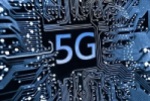 The 5G picture is getting clearer by the day. While there is still a lot of fuzziness that will take take time to crystallize the broad outline for 5G is now more clear. Below, is a summary of some of our findings on 5G. Needless to say, 5G developments will have significant ramifications especially as the capital expenses to build 5G networks will be greater than ever before. This should not be a surprise as despite the call to reduce the unit cost of data transport (i.e. $/bit), the overall network expenditures continue to rise. So, here is the broad outline for 5G:
The 5G picture is getting clearer by the day. While there is still a lot of fuzziness that will take take time to crystallize the broad outline for 5G is now more clear. Below, is a summary of some of our findings on 5G. Needless to say, 5G developments will have significant ramifications especially as the capital expenses to build 5G networks will be greater than ever before. This should not be a surprise as despite the call to reduce the unit cost of data transport (i.e. $/bit), the overall network expenditures continue to rise. So, here is the broad outline for 5G:
1- 5G Networks will not start commercial operations before 2022. 5G will be introduced in a phased approach with Phase 1 available for commercial deployments around 2020. However, Phase 1 is a limited edition of 5G that will leverage existing LTE networks while ‘true’ 5G will not be commercial until 2022 based on the timelines being discussed at the standard organizations.
2- Spectrum is a major roadblock to 5G deployments. 5G will focus initially on ‘lower’ spectrum bands, but > 6 GHz will get most media (and investor?) attention. There are different views on what ‘lower’ is given the shortage of spectrum in sub 6 GHz bands. Even where spectrum is available, it is not sufficient to deliver the target data rates. This brings mm-wave into the picture. There are significant issues to resolve for using mm-wave for mobile access (specific absorption rate, mobility robustness, cell edge behavior, range, etc.). In fact, we foresee that fixed access technologies (WDM, fiber, etc.) for backhaul, midhaul or fronthaul (or simply xhaul!) will benefit commercially from 5G while the cloudy spectrum picture is getting resolved.
3- Forward compatibility, not backward compatibility. Just about every technology looks back to what can be leveraged and saved. While this is also true of 5G (as in Phase 1 5G), the objective will be placed on forward compatibility. This means ‘software everything’: SDN, NFV, SDR, etc… all these acronyms will be in the 5G mix. This is a nobel but challenging goal that comes by necessity from different perspectives whether financial – to limit capital expenditure – or pragmatic to support new use cases.
4- More interfaces will make 5G testing harder than ever. First, many of the interfaces used in wireless systems will be rethought to get more efficiency (one example is the CPRI interface between BBU and RRH). Second, different use cases will necessitate additional interfaces which brings into question compatibility between different vendors. Test tool companies will be busy, very busy with 5G!
5- 5G is not a revolution but an incremental evolution. This may sound going against the norm, especially when we consider Phase 2 5G. After all, opening mm-wave for access will bring a new physical layer (what exactly it will be is still to be defined) and leverage TDD with flexible frame format. It will also stimulate small cells and hetnets, massive MIMO, coordinated multipoint, 3D beamforming, and interference cancellation receivers. Couple this with virtualization of the RAN and the core that will transform how operators create and provision new services is nothing but revolutionary. However, it is in the integration of these technologies that 5G will be revolutionary, and this is not expected to happen in one day, rather, it will be a long evolutionary road.
5G is as much a framework for technology as it is a technology – at least at this stage of the lifecycle. In contrast, LTE is a technology that is trying to become a framework. More on this in some future post!
Pingback: 5G: Revolution or Evolution? | Frank Rayal